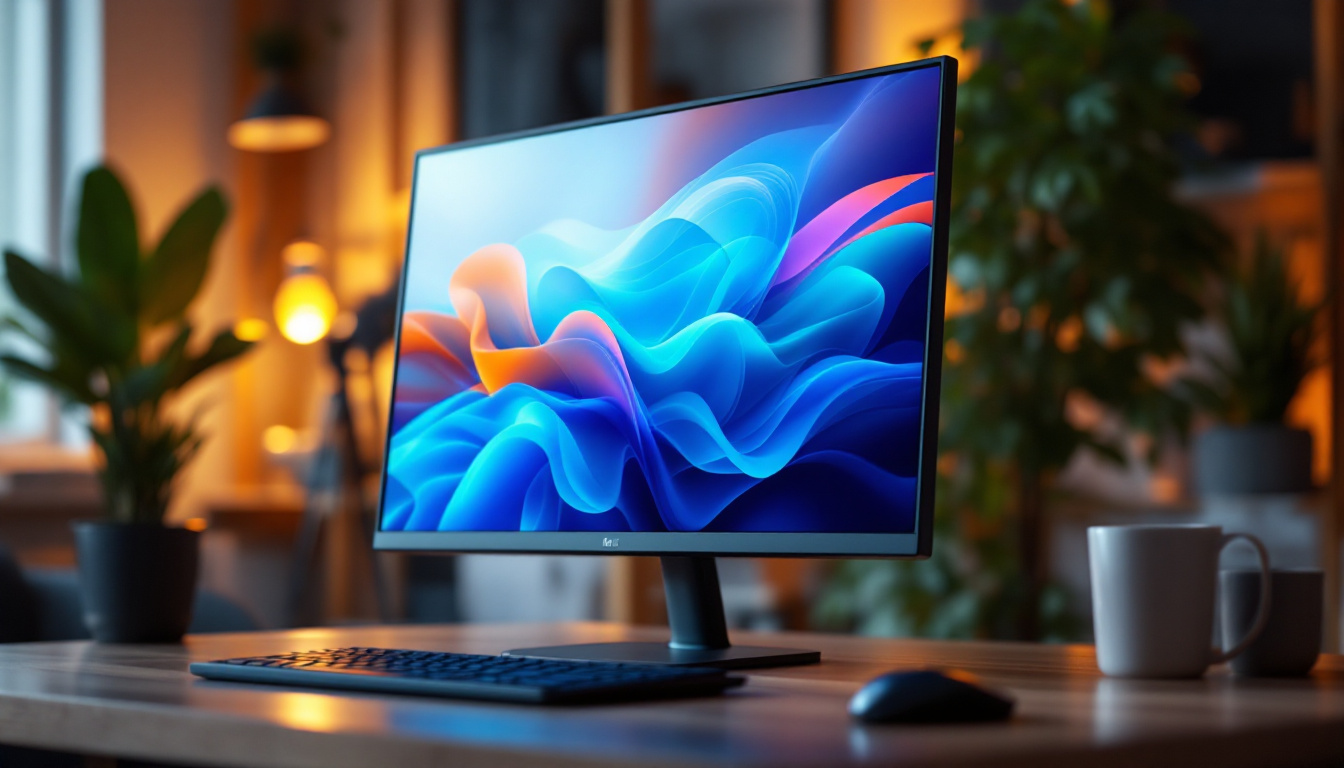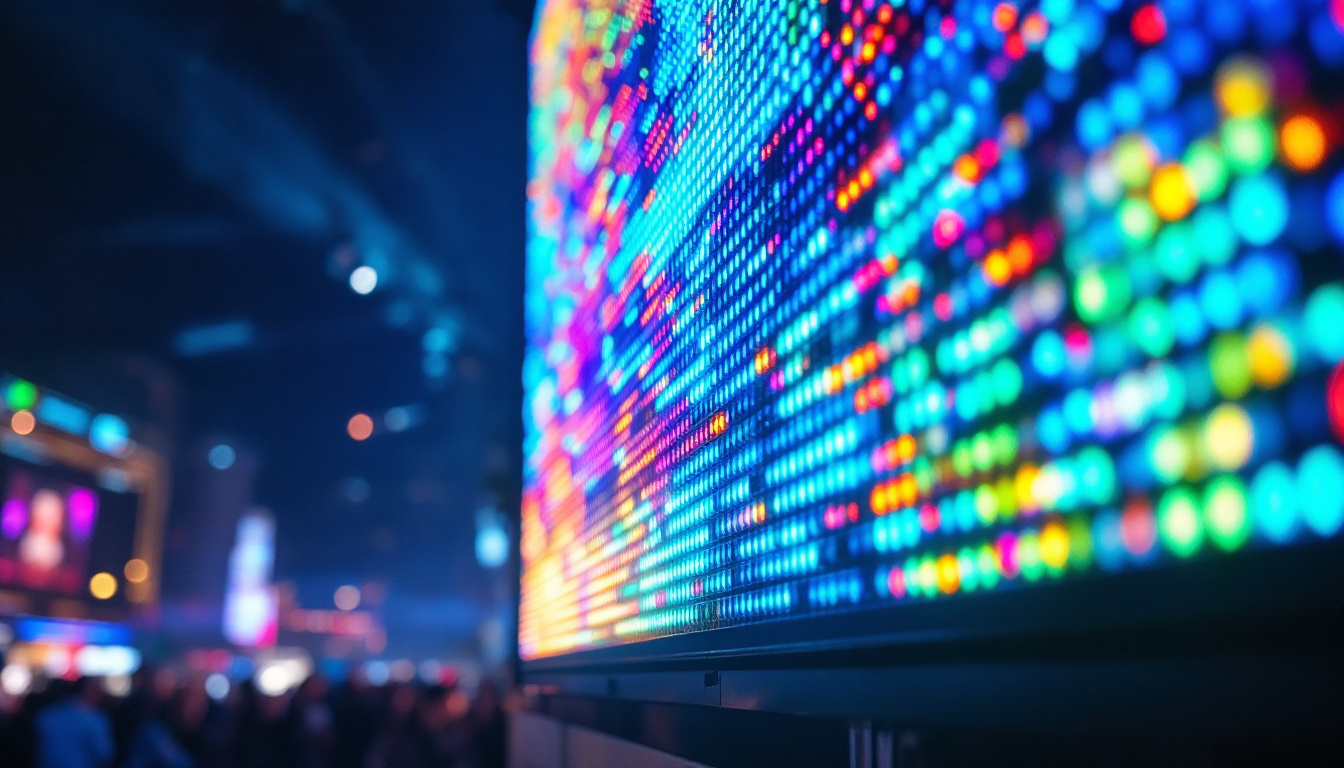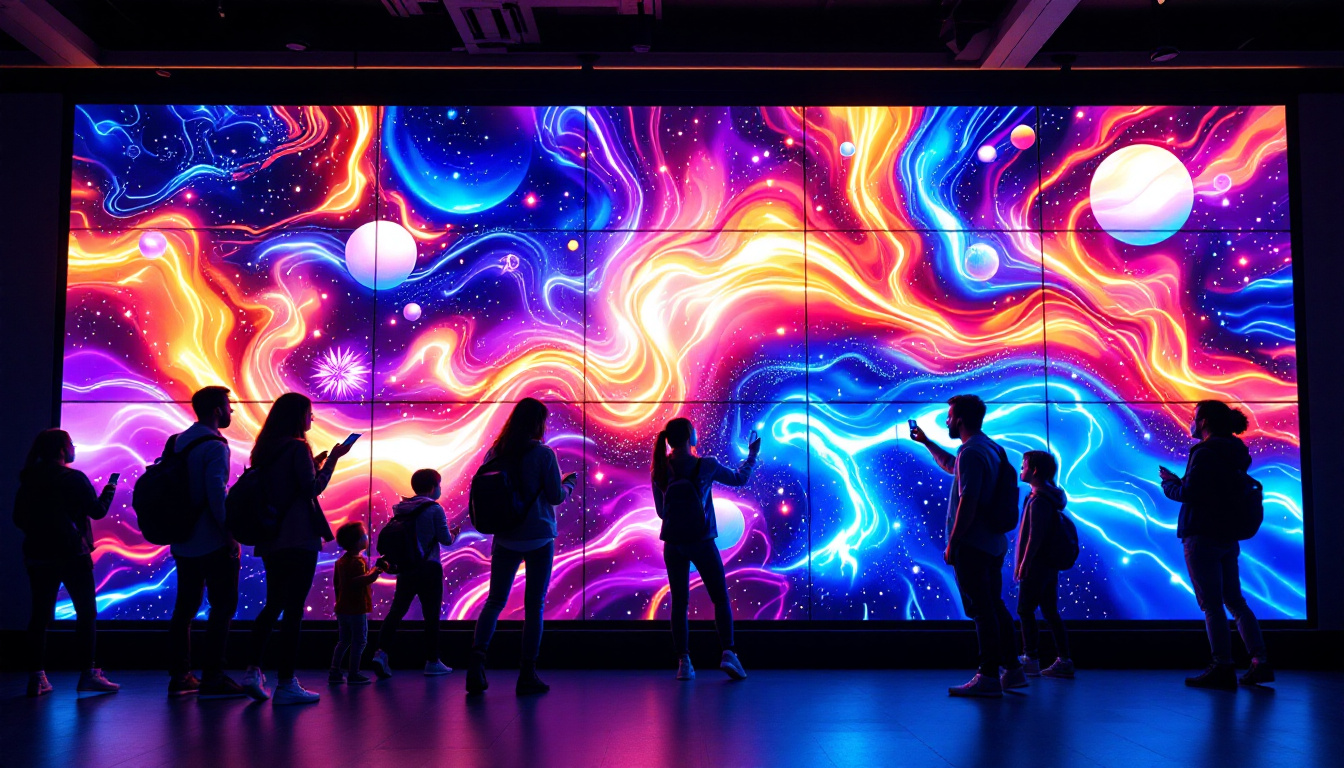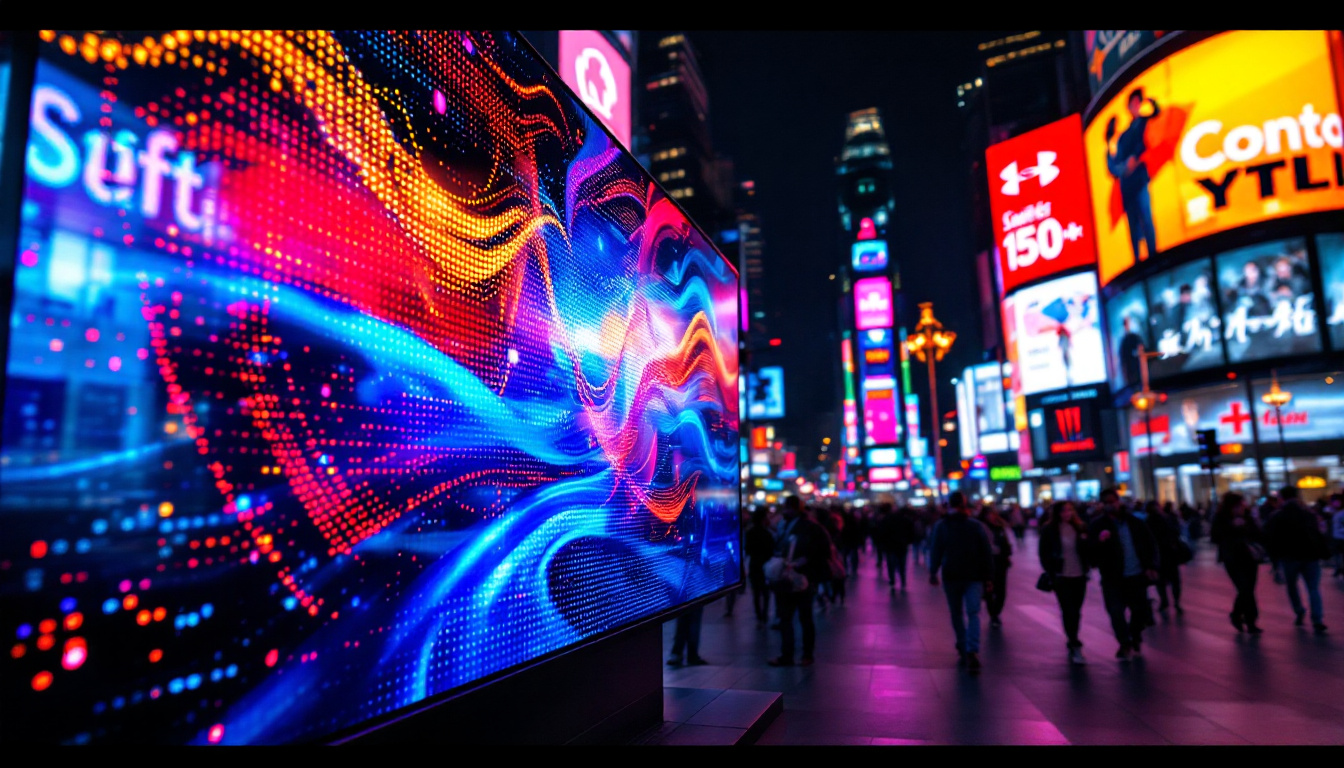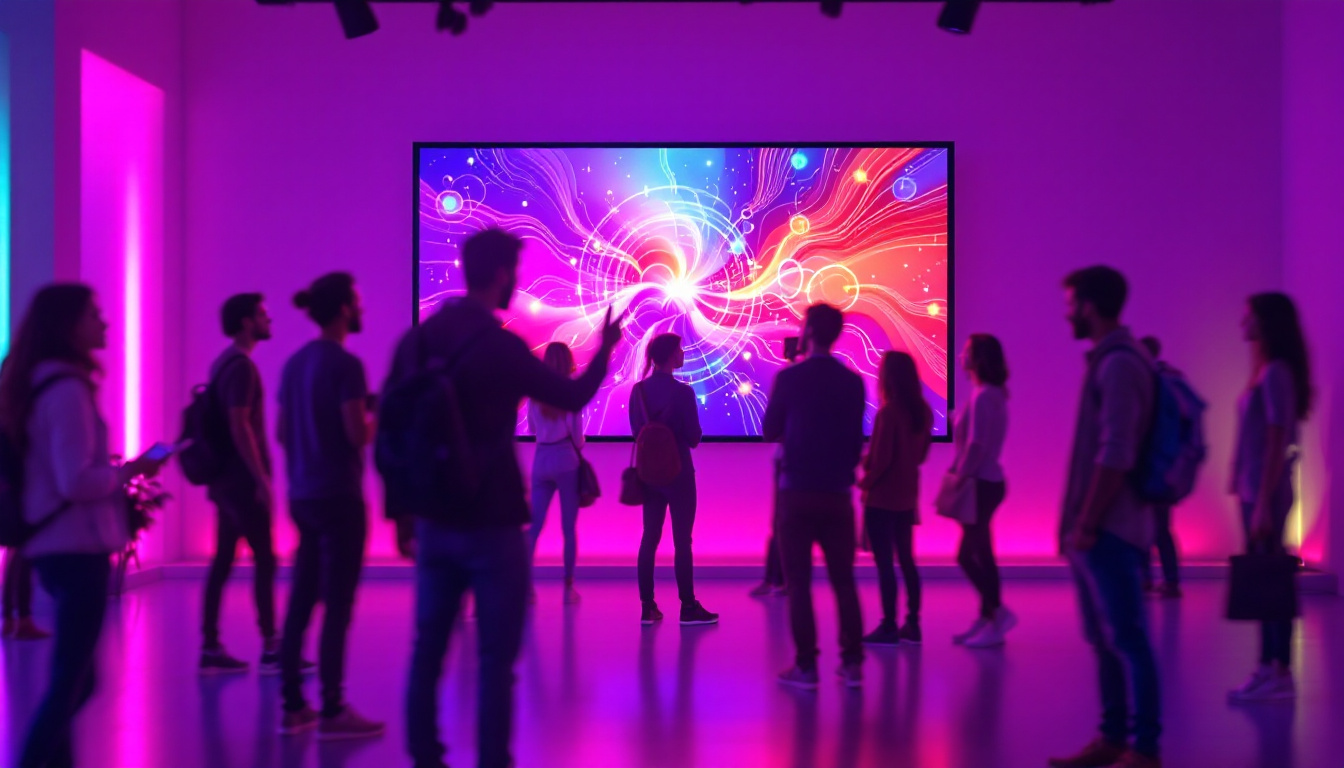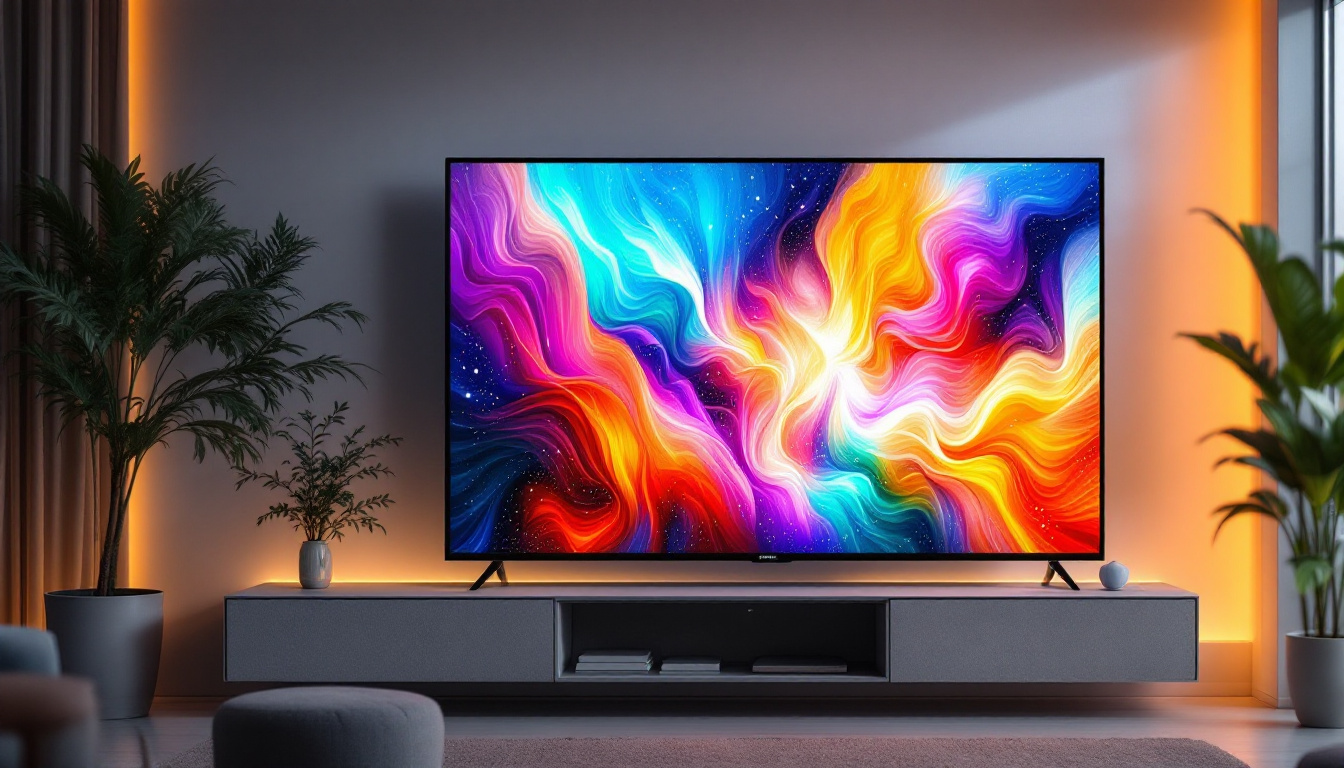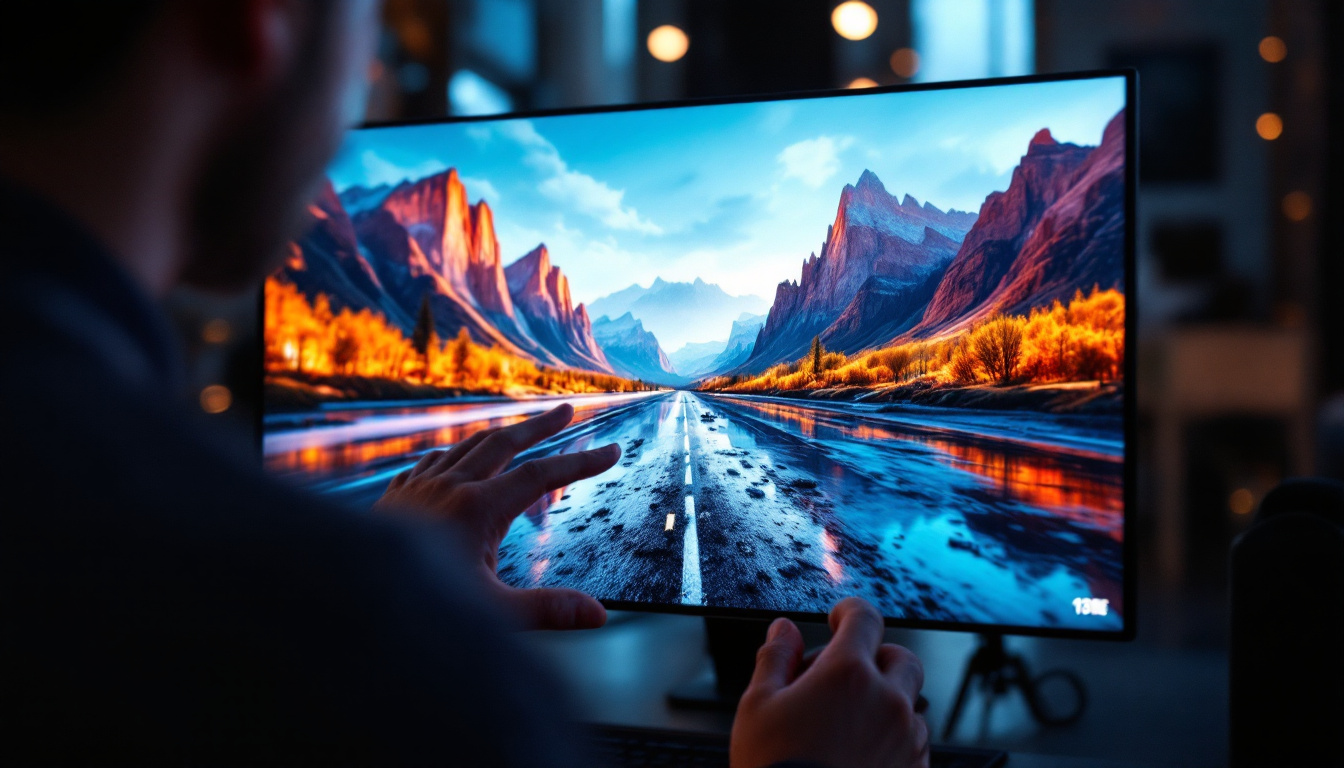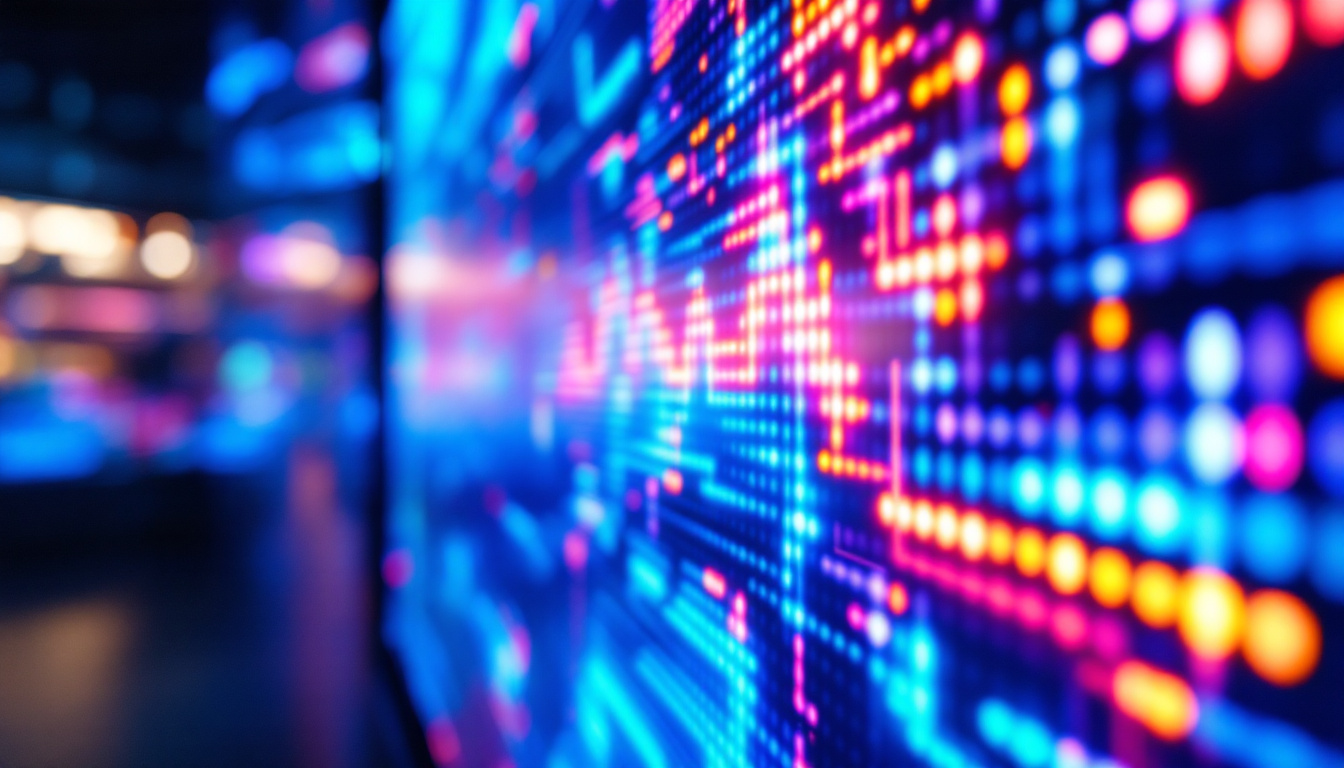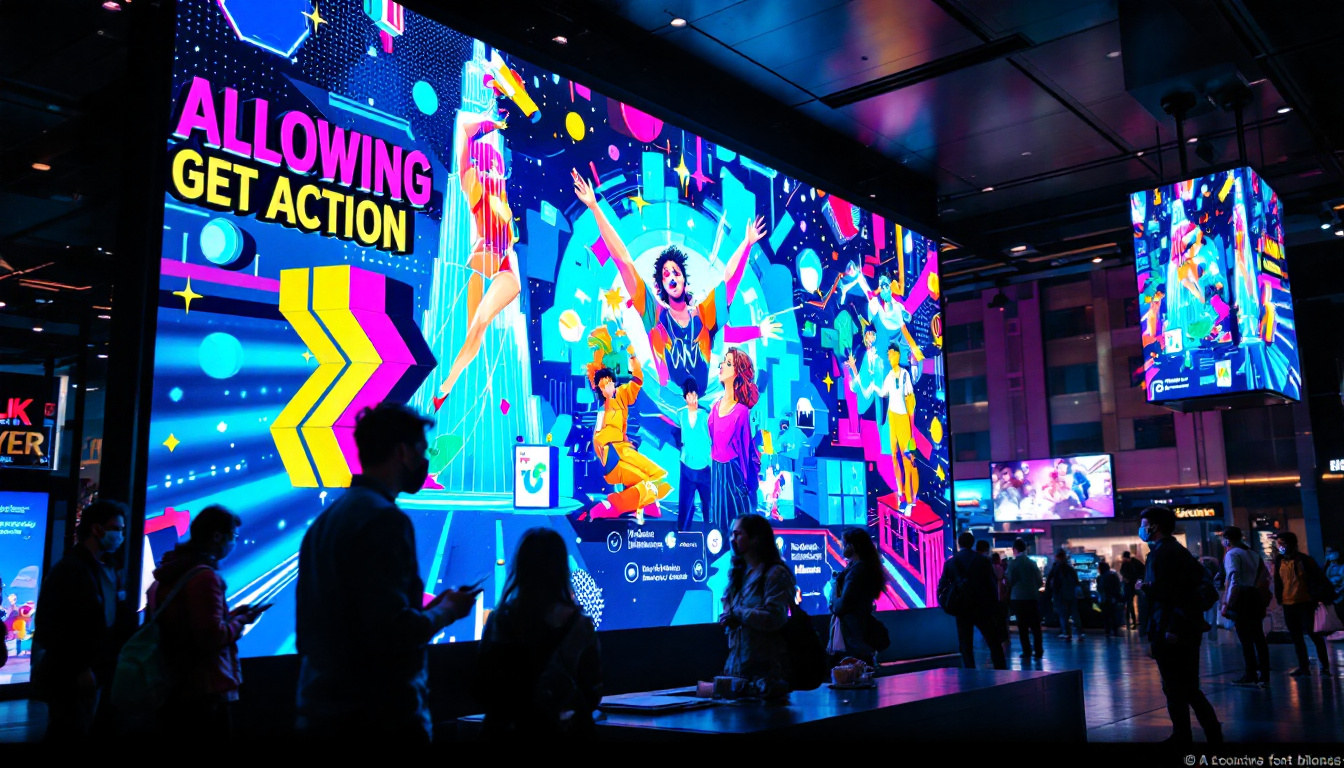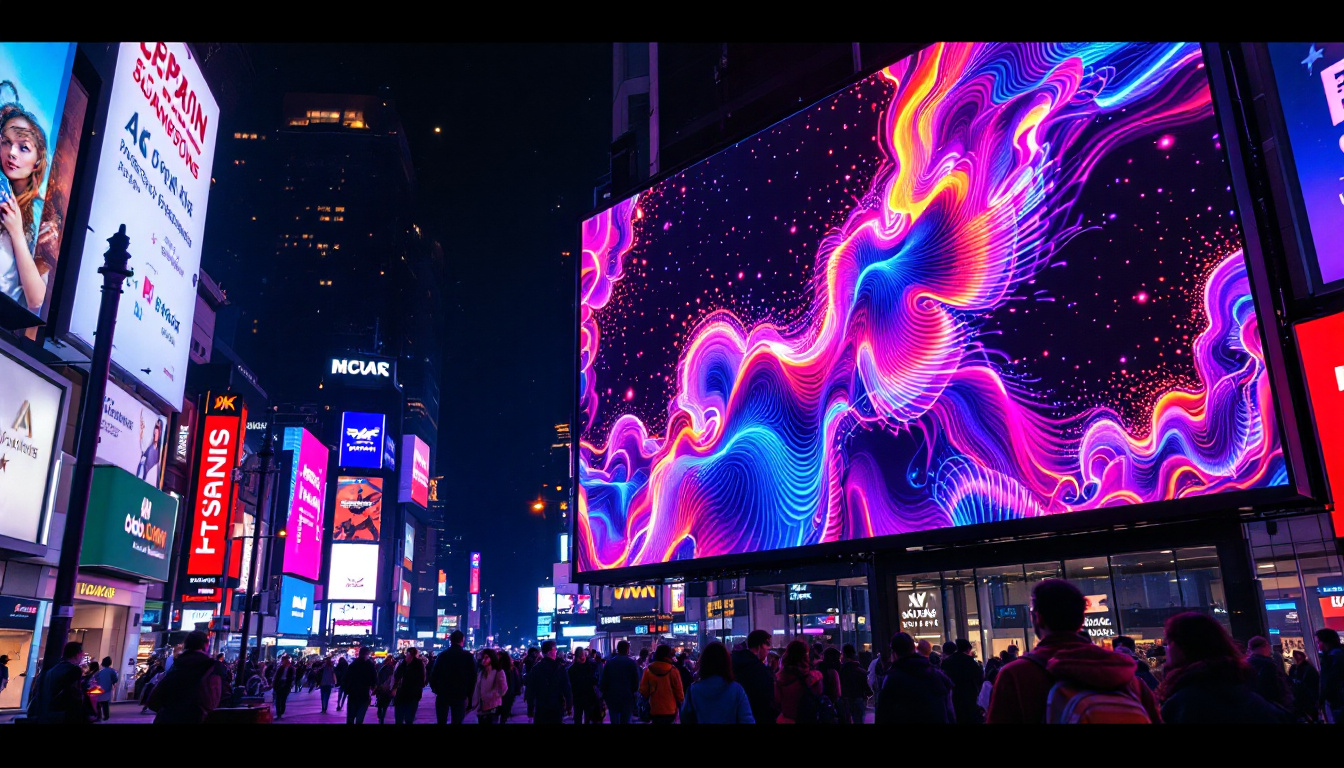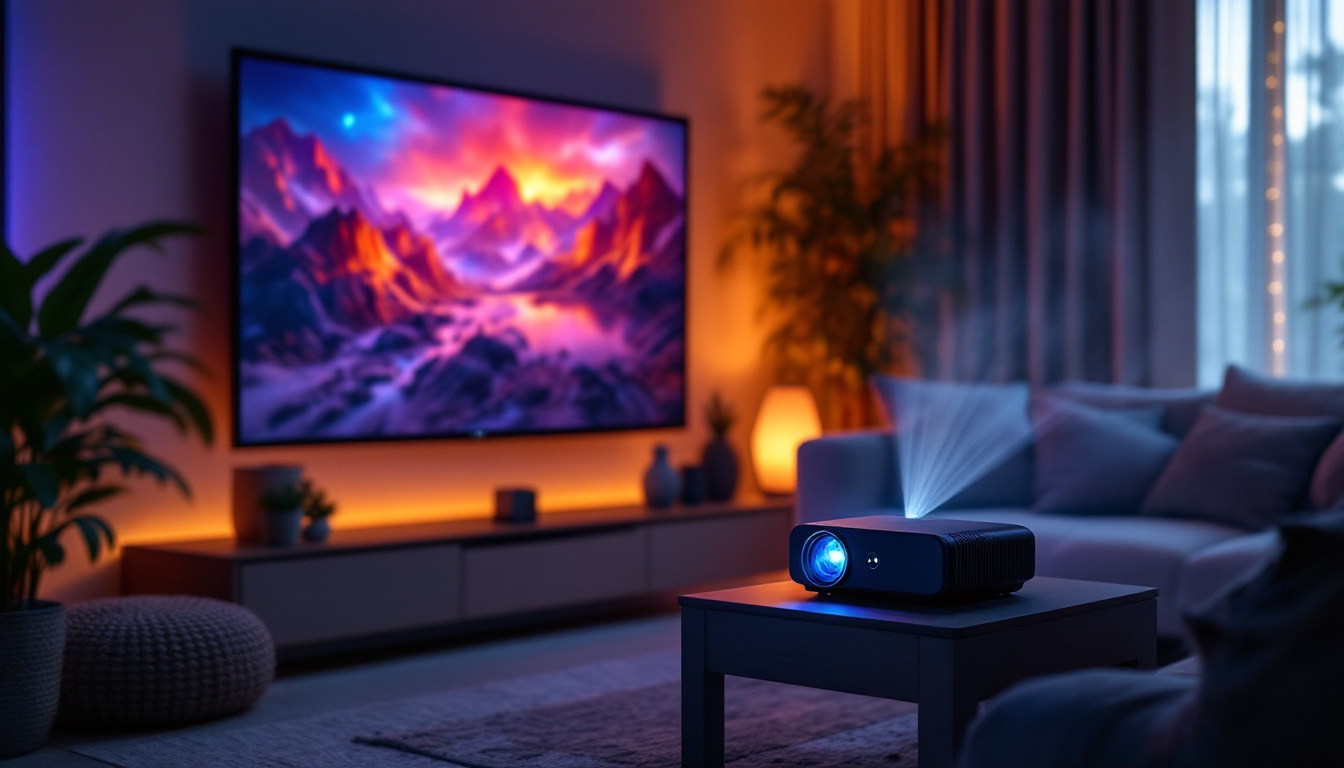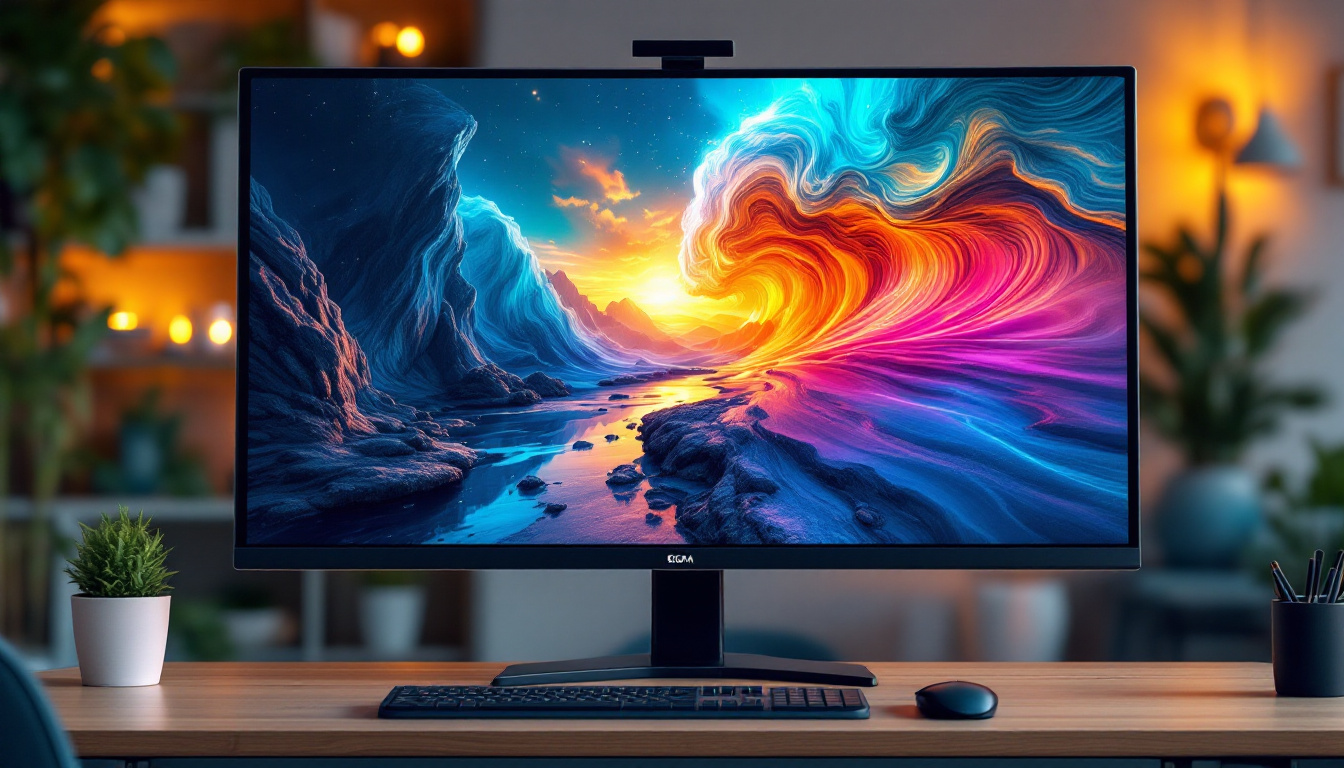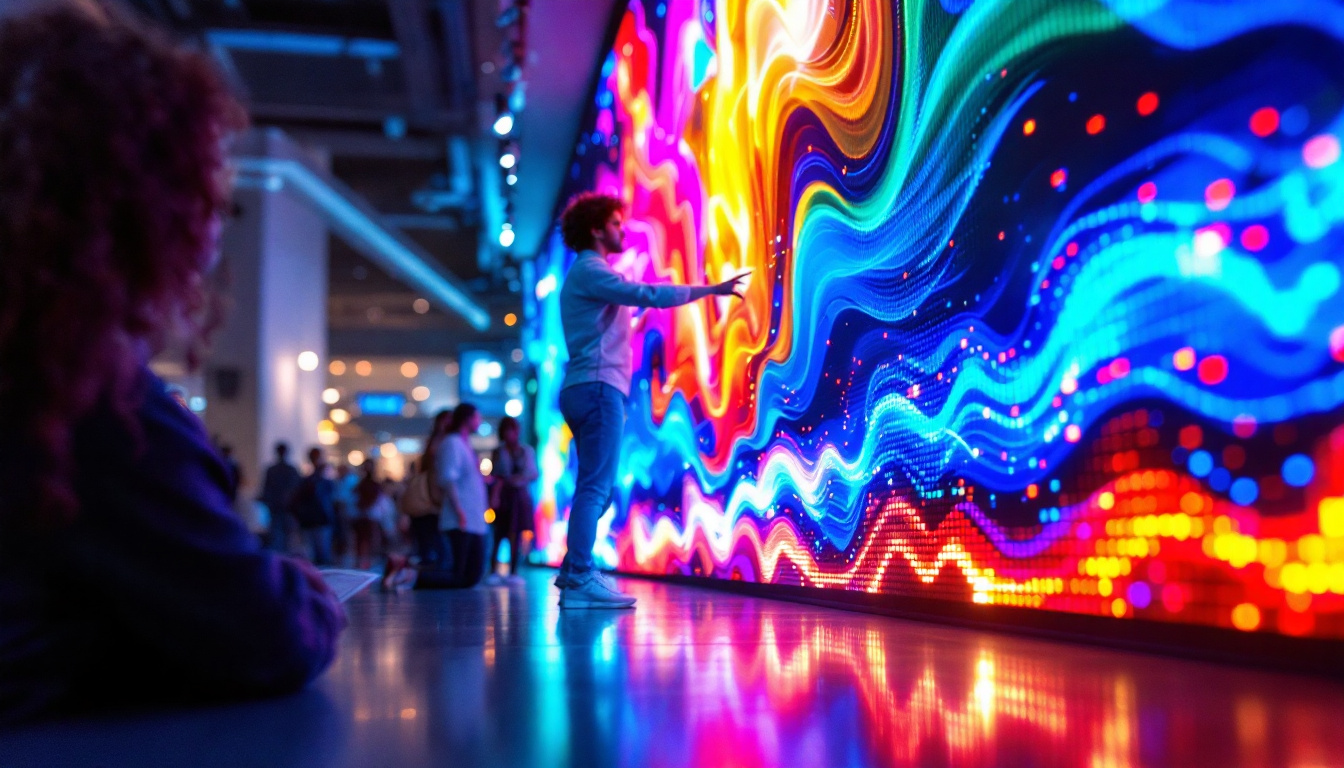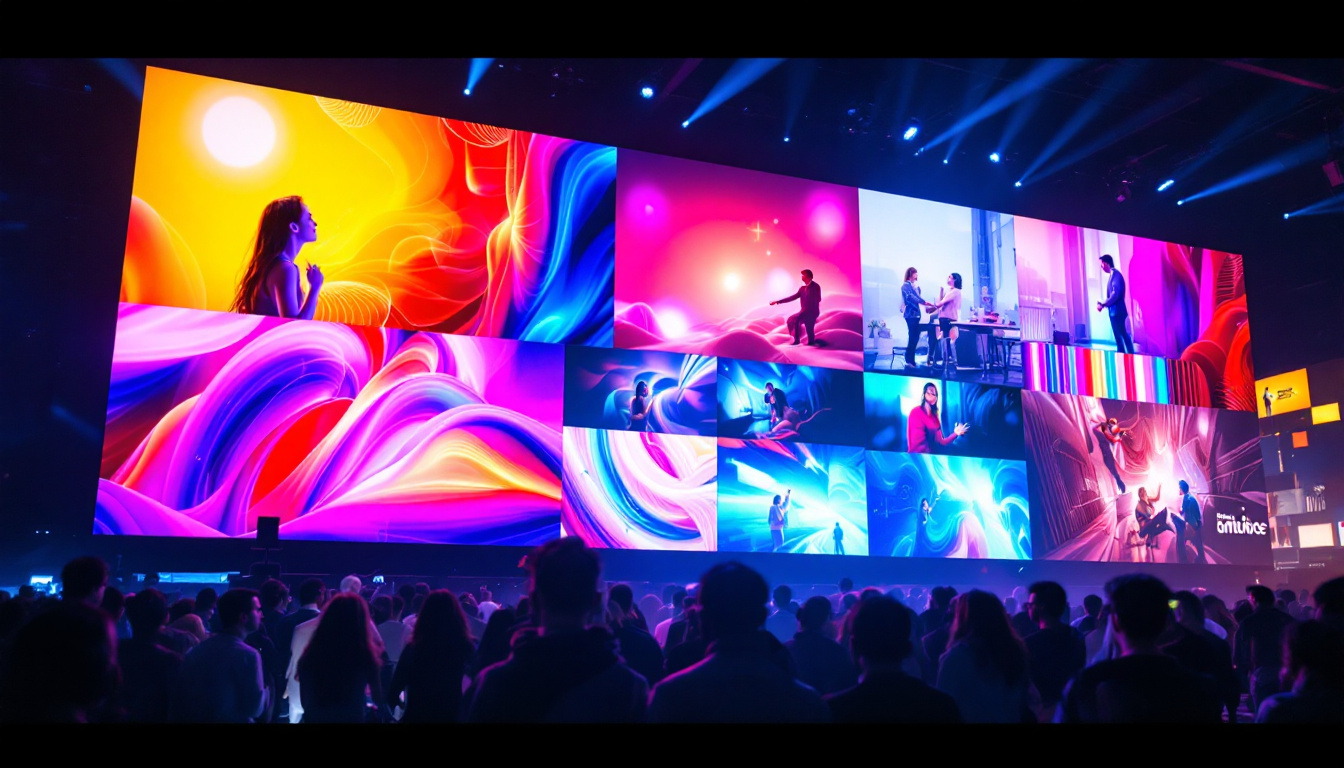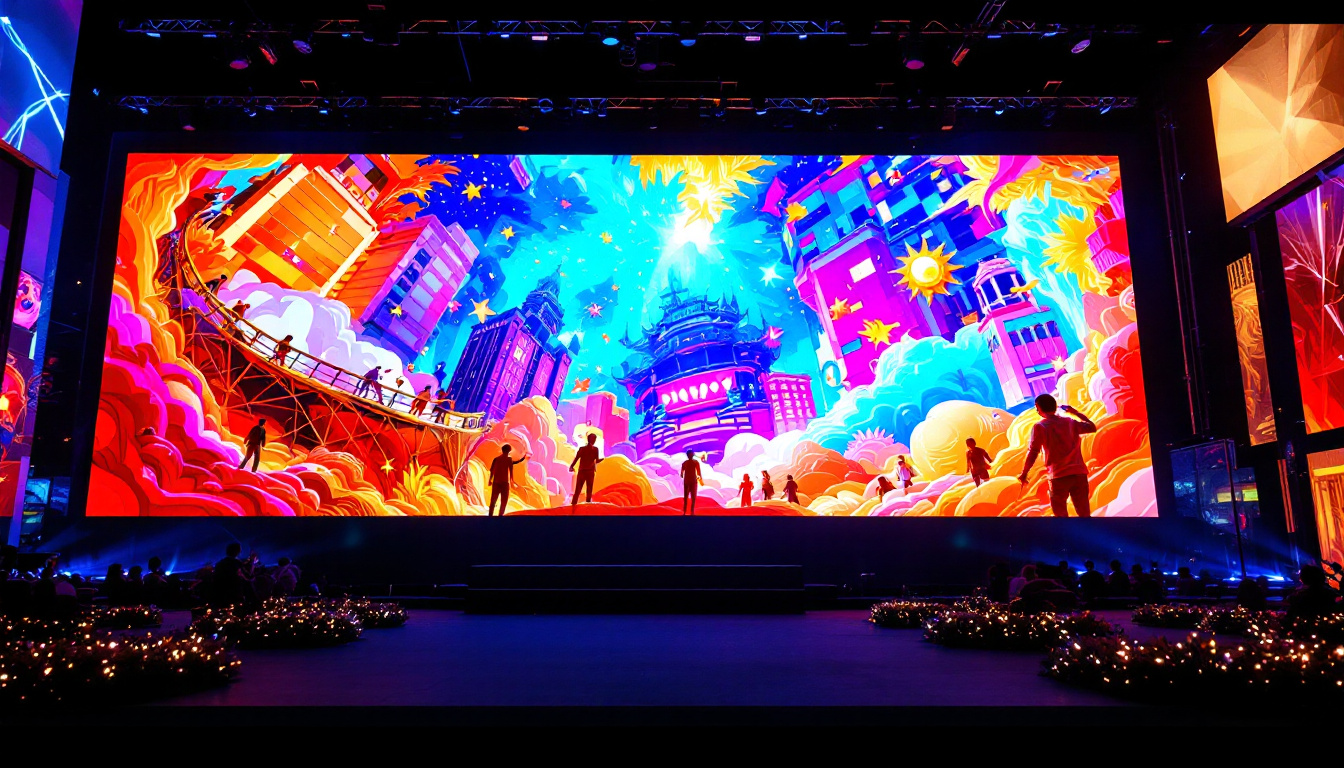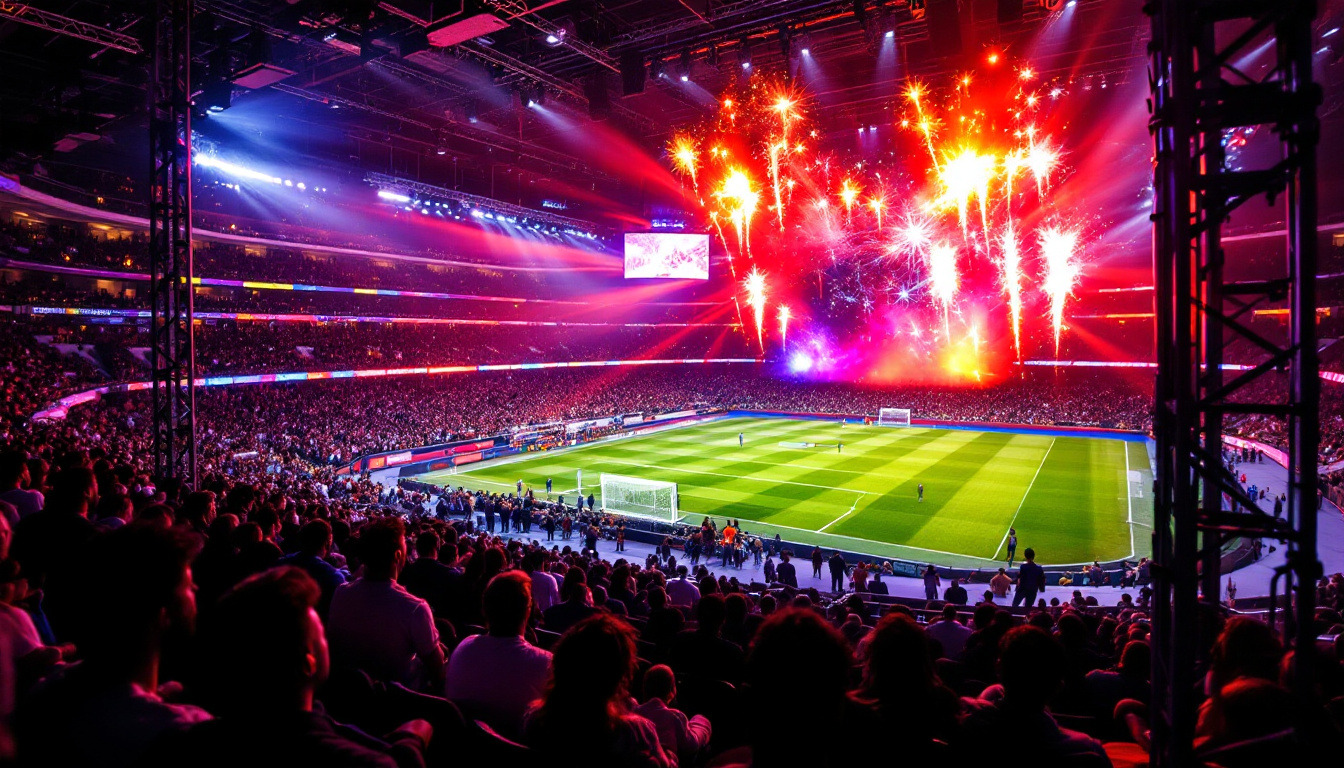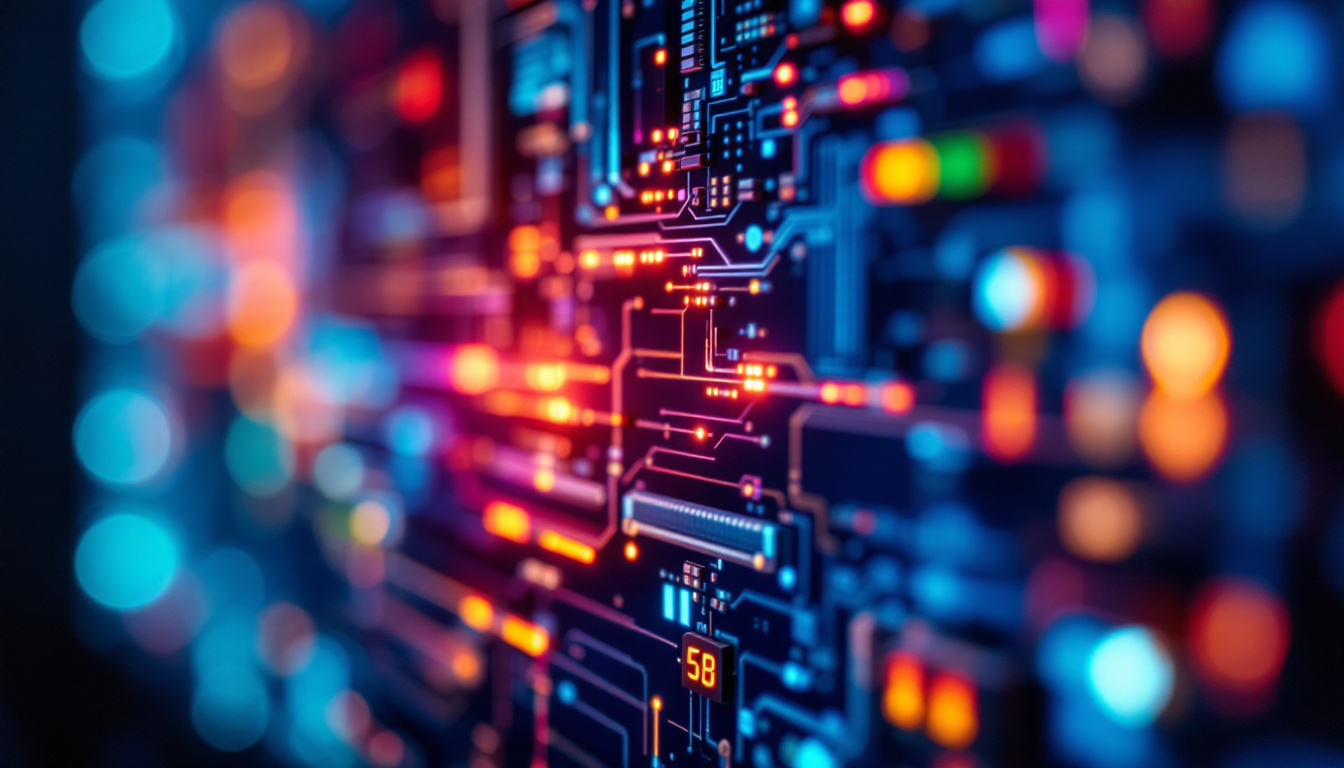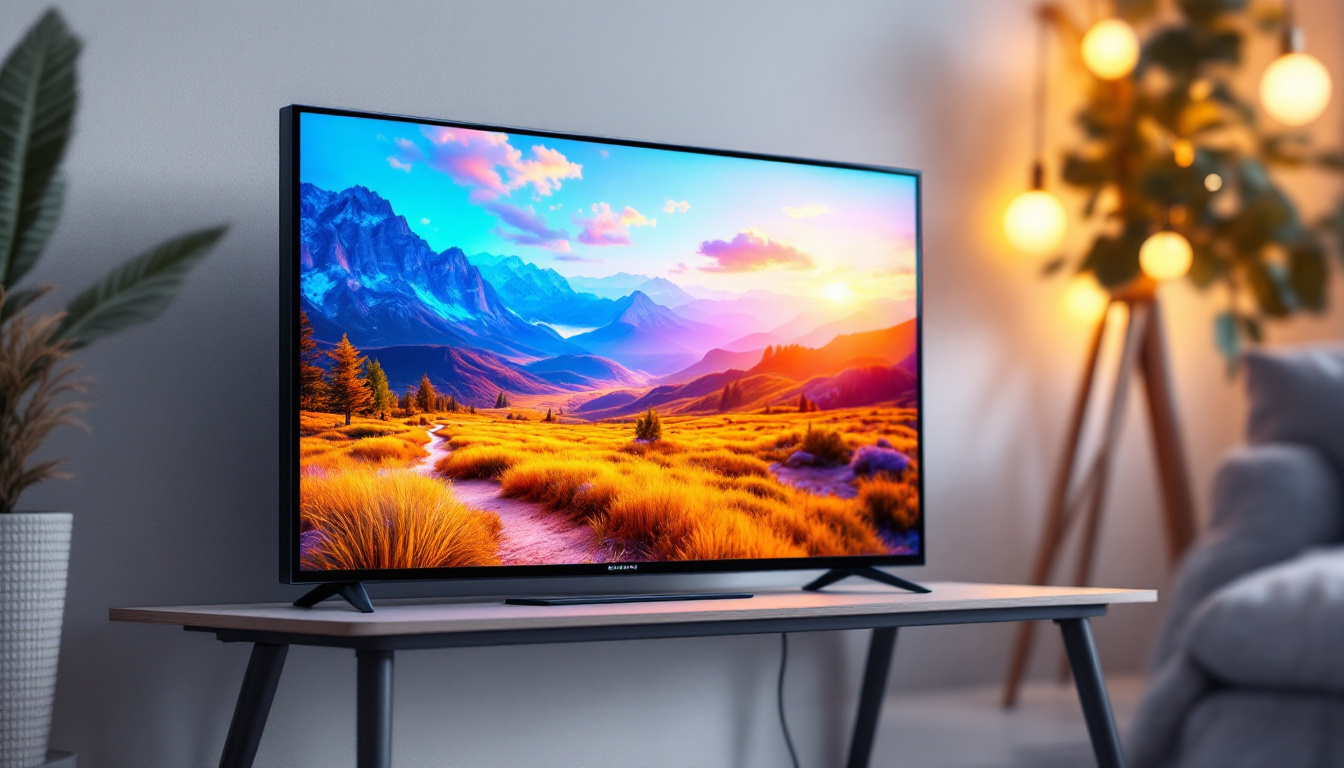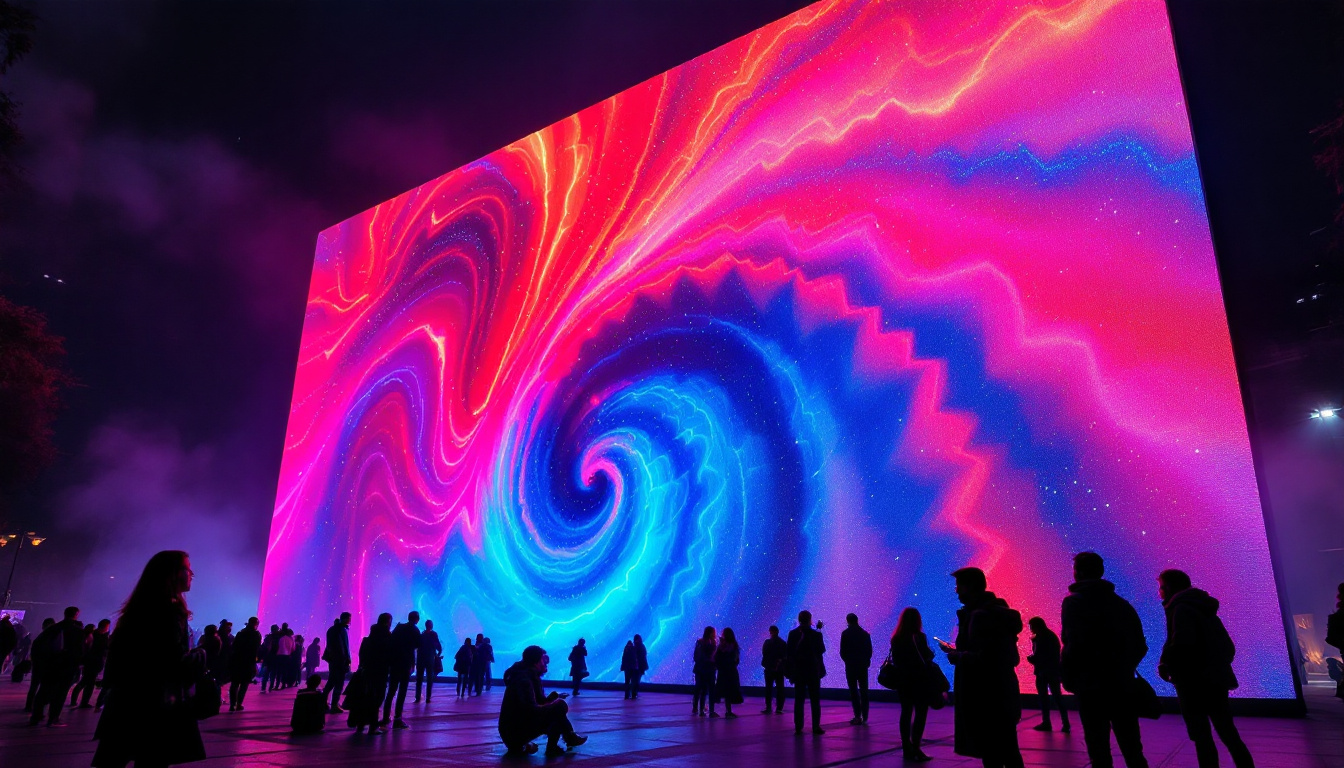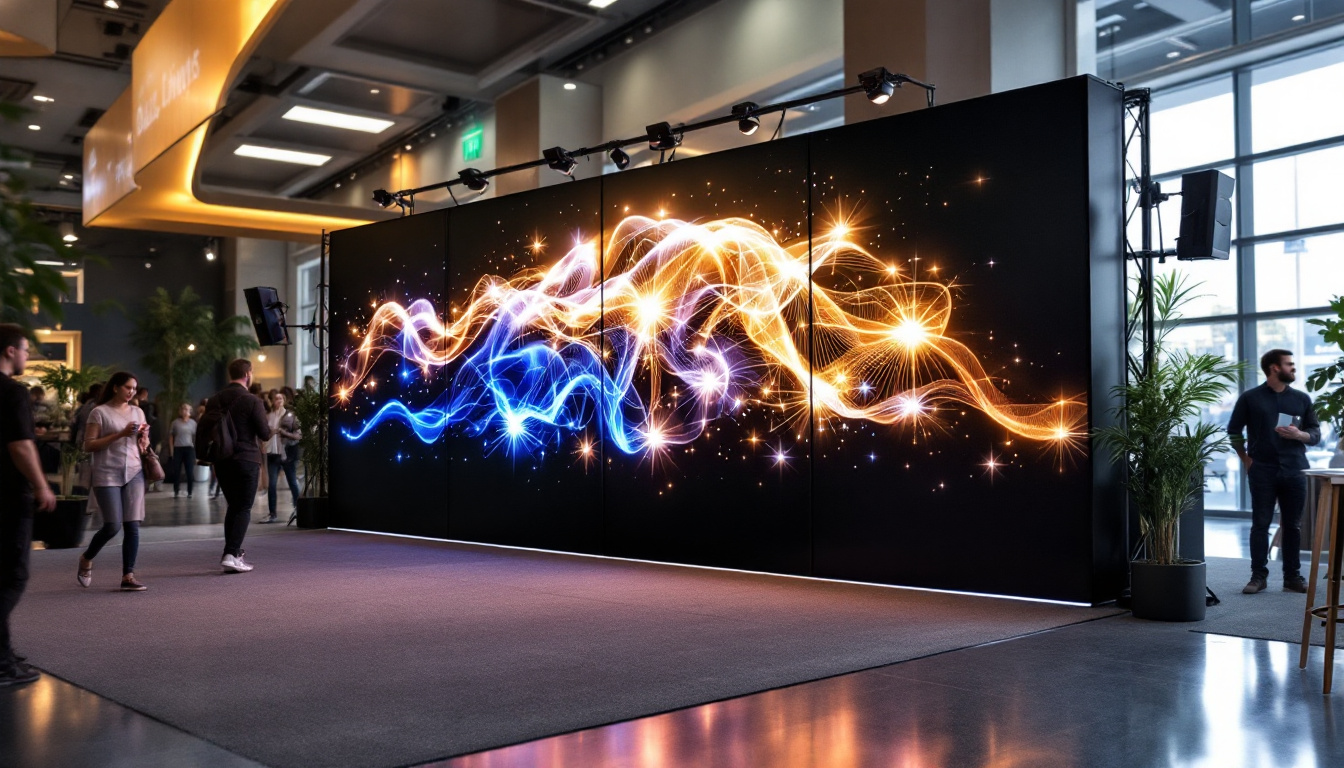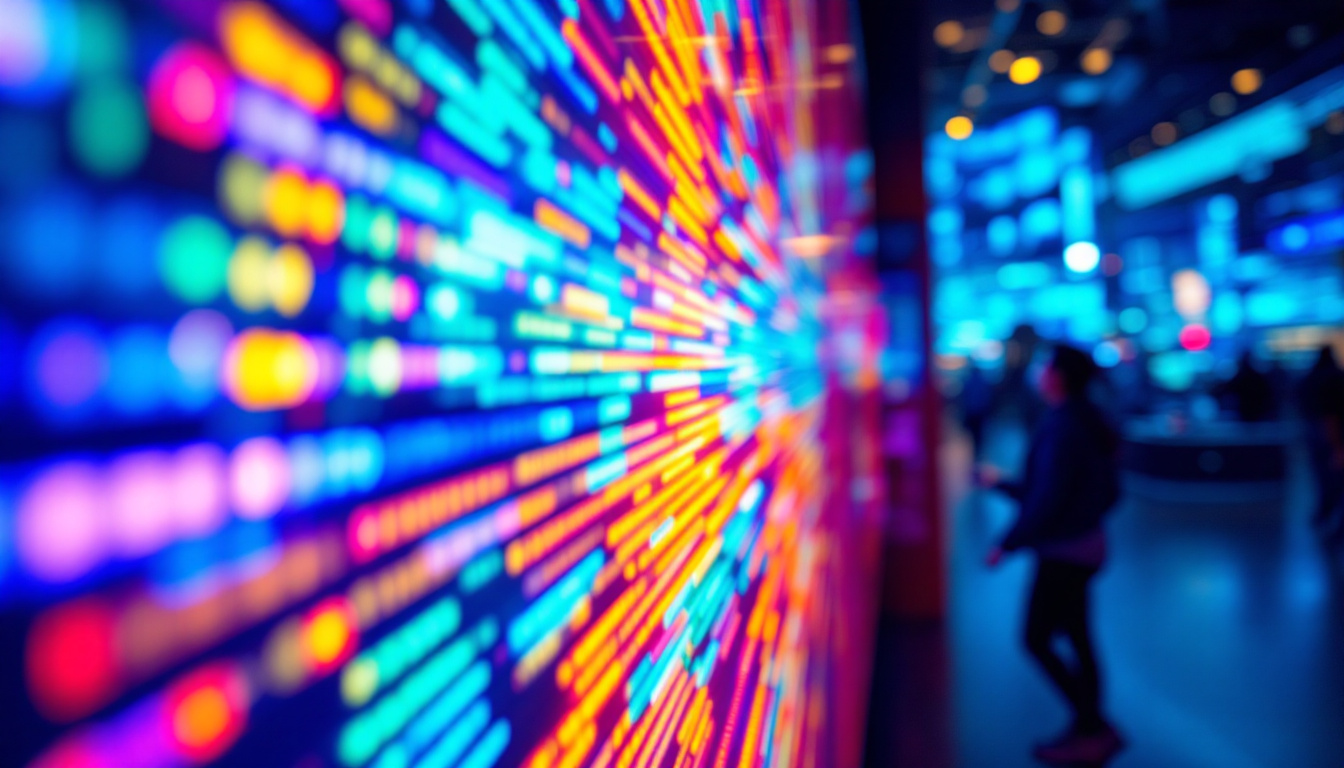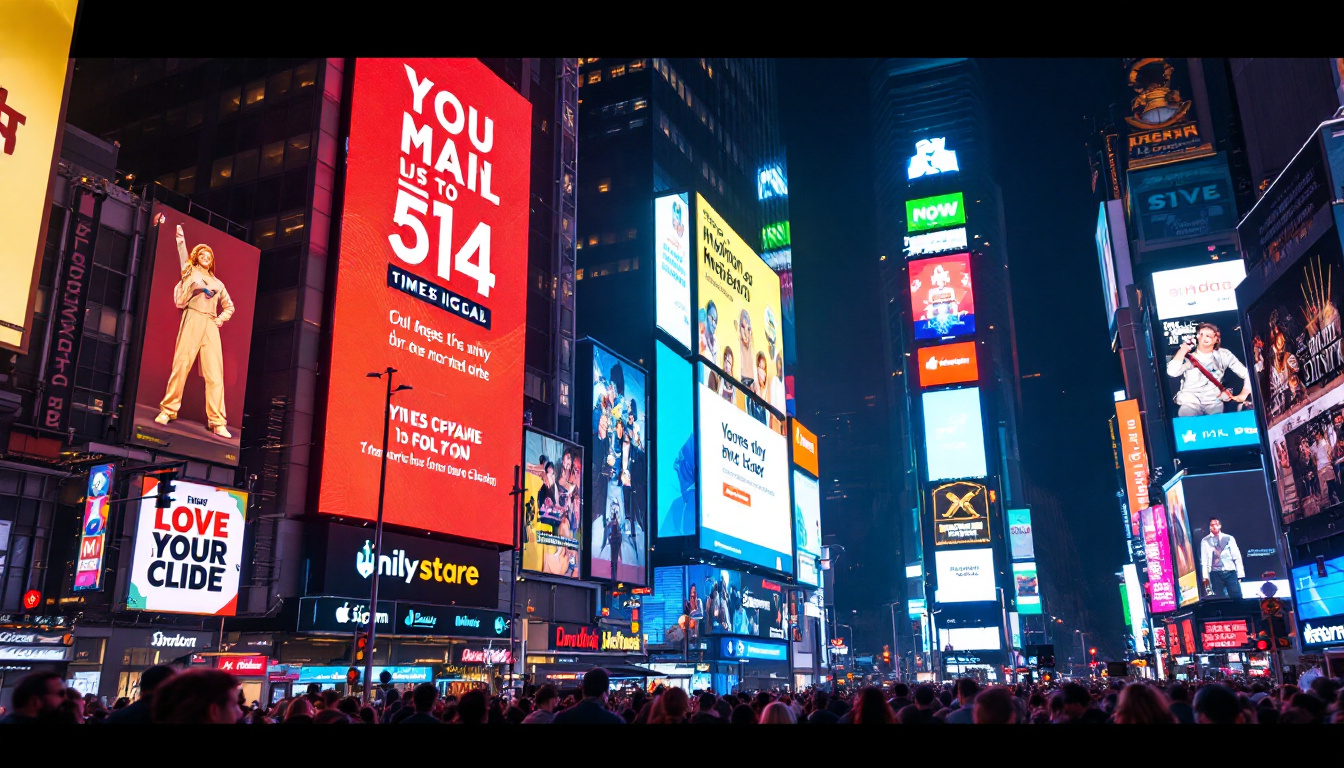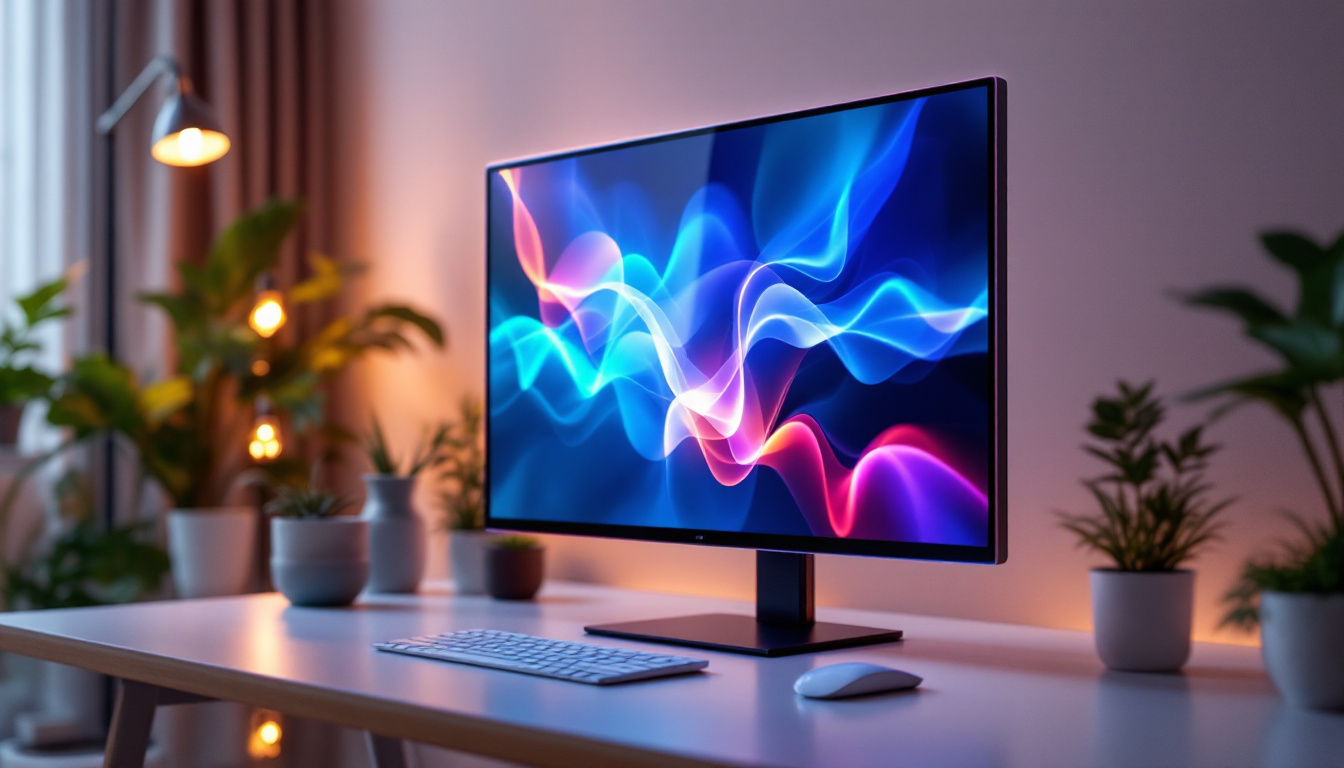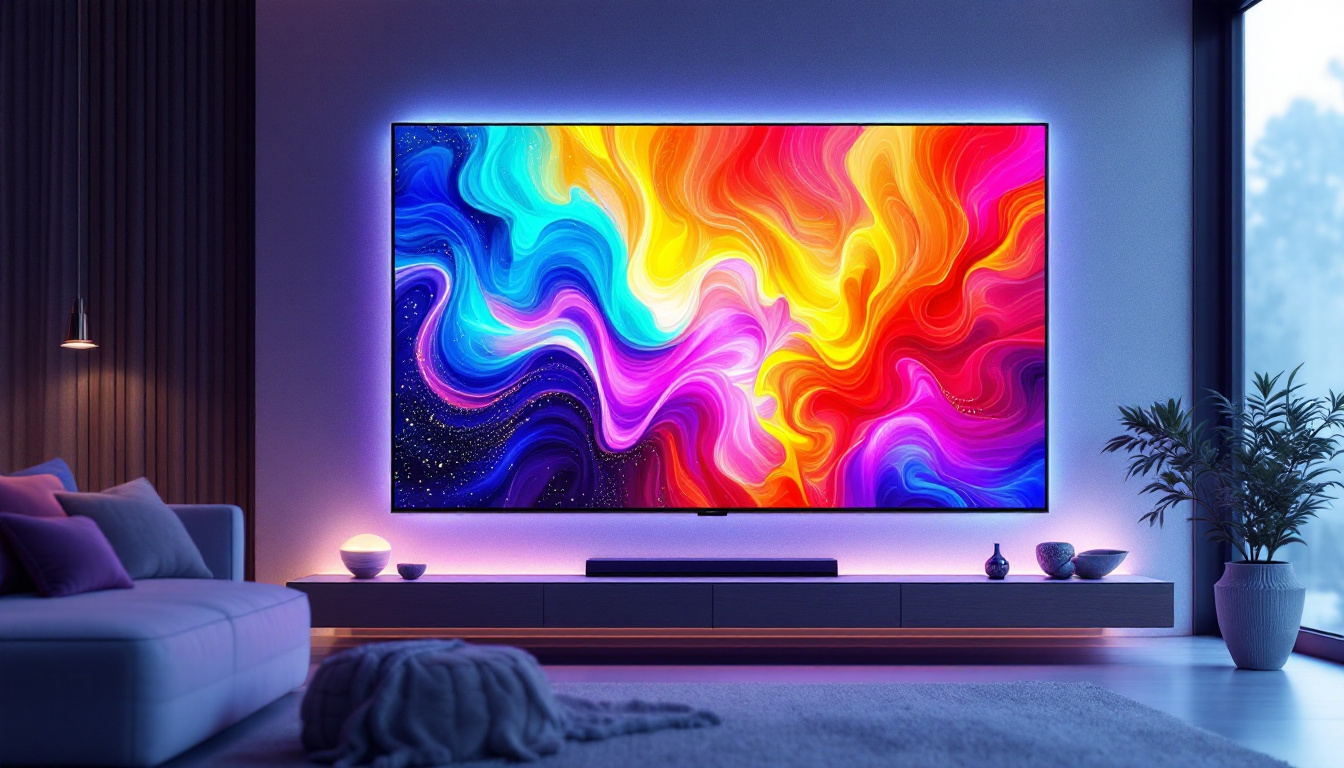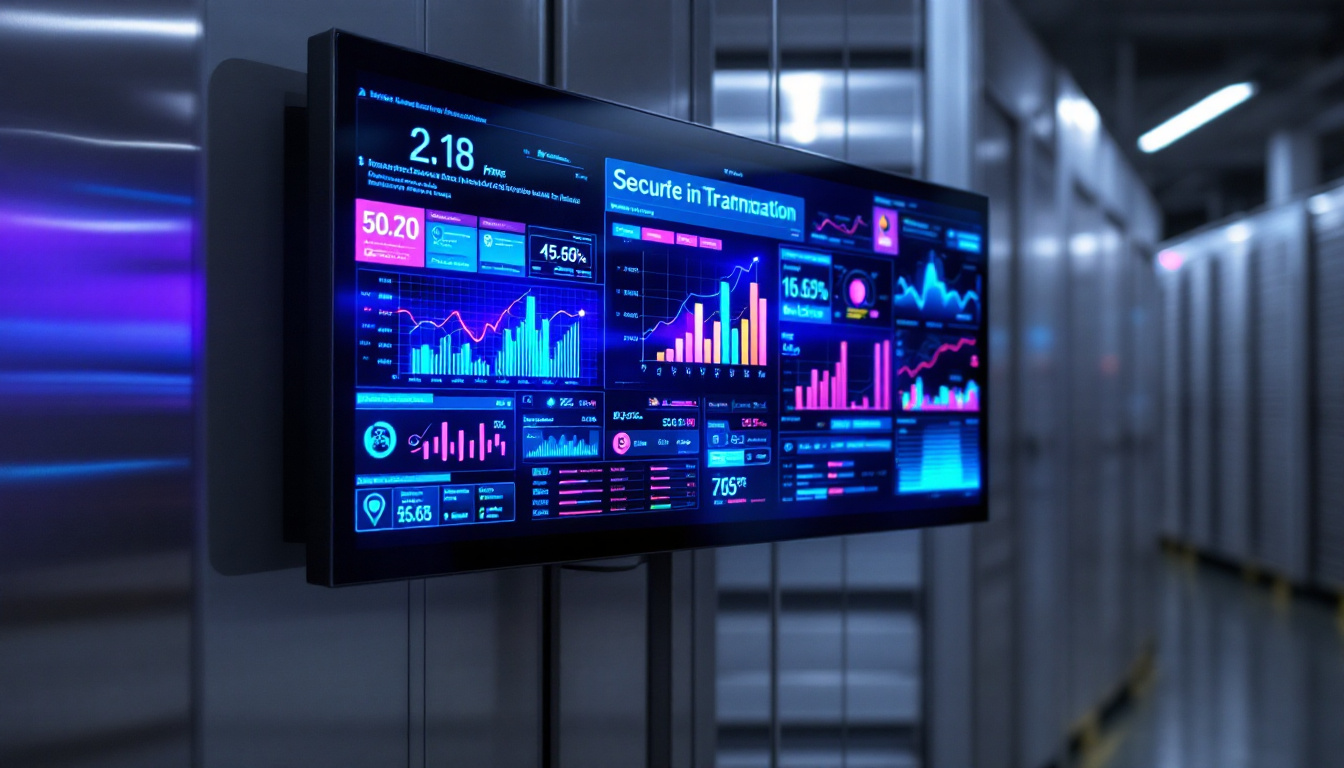In the realm of modern technology, LED monitors have emerged as a popular choice for both personal and professional use. Their vibrant colors, energy efficiency, and sleek designs have made them a staple in homes, offices, and gaming setups. This article delves into the intricacies of LED displays, exploring their benefits, types, and the technology behind them.
Understanding LED Technology
LED, or Light Emitting Diode, is a semiconductor device that emits light when an electric current passes through it. This technology has revolutionized the display industry, providing a more efficient and effective way to produce images compared to traditional LCD monitors.
How LED Displays Work
LED monitors utilize a backlighting system comprised of numerous tiny LEDs. Unlike conventional LCDs that use fluorescent lights for backlighting, LED displays can achieve greater brightness and contrast. The light produced by these diodes is directed through a liquid crystal layer, which modulates the light to create images on the screen.
This process allows for deeper blacks and brighter whites, enhancing the overall viewing experience. The ability to control individual pixels also contributes to improved color accuracy and better energy efficiency, making LED displays a preferred choice for many users.
Moreover, the advancements in LED technology have led to the development of OLED (Organic Light Emitting Diode) displays, which take the concept further by allowing each pixel to emit its own light. This results in even more vibrant colors and the ability to achieve true black levels, as pixels can be completely turned off. As a result, OLED displays are increasingly popular in high-end televisions and smartphones, providing an immersive viewing experience that captivates audiences.
The Evolution of Display Technology
Over the years, display technology has evolved significantly. From bulky CRT monitors to the sleek designs of modern LED displays, each advancement has brought improvements in image quality, energy consumption, and user experience. The introduction of LED technology marked a pivotal moment, offering a lightweight and energy-efficient alternative to traditional displays.
As technology continues to advance, LED displays have incorporated features such as higher resolutions, faster refresh rates, and adaptive brightness, further enhancing their appeal. The integration of smart technology has also allowed for interactive displays, making them versatile for various applications.
In addition to consumer electronics, LED technology has found its way into various fields such as advertising, automotive lighting, and architectural design. digital billboards and signage utilize LED technology for its brightness and visibility, even in direct sunlight. Furthermore, the automotive industry has embraced LEDs for headlights and interior lighting, providing longer-lasting and more energy-efficient solutions. As we look to the future, the potential for LED technology seems boundless, with ongoing research into new materials and applications promising to push the boundaries of what is possible in visual display and lighting solutions.
Types of LED Monitors
LED monitors come in various types, each designed to cater to different needs and preferences. Understanding these types can help consumers make informed decisions when purchasing a monitor.
Edge-Lit LED Monitors
Edge-lit LED monitors utilize LEDs placed along the edges of the screen. This design allows for a thinner profile, making them ideal for users seeking a sleek and modern aesthetic. However, while they offer improved brightness and color compared to traditional LCDs, edge-lit displays may struggle with uniformity in brightness across the screen. Additionally, the viewing angles can sometimes be limited, leading to color distortion when viewed from the side. These monitors are often favored for general use, such as office work or casual media consumption, where the absolute best picture quality isn’t the primary concern.
Full-Array LED Monitors
Full-array LED monitors contain a grid of LEDs behind the entire screen, providing more uniform brightness and better contrast ratios. This technology allows for local dimming, where specific areas of the screen can be dimmed or brightened independently. As a result, full-array displays deliver deeper blacks and more vibrant colors, making them suitable for watching movies or playing video games. Furthermore, many full-array monitors support HDR (High Dynamic Range), which enhances the viewing experience by expanding the range of colors and brightness levels. This feature is particularly appealing to content creators and gamers who require accurate color representation and dynamic visuals.
OLED vs. LED
While LED monitors are popular, OLED (Organic Light Emitting Diode) technology has gained traction in recent years. Unlike LED displays that rely on backlighting, OLED panels emit light from each pixel individually. This results in superior contrast ratios and color accuracy, as well as faster response times. However, OLED monitors can be more expensive and may face issues like burn-in, where static images can leave a permanent mark on the screen. Despite these drawbacks, the appeal of OLED lies in its ability to produce true blacks and a wider color gamut, making it a favorite among film enthusiasts and graphic designers who demand the highest quality visuals. As technology advances, newer OLED models are being developed with features aimed at mitigating burn-in risks, making them an increasingly viable option for everyday users.
Benefits of LED Monitors
The advantages of LED monitors extend beyond just aesthetics. They offer numerous benefits that enhance the overall user experience.
Energy Efficiency
One of the most significant benefits of LED monitors is their energy efficiency. Compared to traditional LCD and CRT monitors, LED displays consume less power, resulting in lower electricity bills and a reduced carbon footprint. This efficiency is particularly appealing for businesses and organizations looking to minimize operational costs.
Improved Color Accuracy
LED monitors are known for their vibrant colors and improved color accuracy. The ability to produce a wider color gamut allows for more realistic images, making them ideal for graphic designers, photographers, and anyone who requires precise color representation. This enhancement is particularly noticeable in full-array LED monitors, which provide better contrast and deeper blacks.
Versatility and Applications
LED monitors are versatile and can be used in various applications, from gaming to professional work. Their lightweight design makes them easy to transport, while their high resolutions cater to different needs. Whether for casual browsing, professional graphic design, or immersive gaming experiences, LED monitors can accommodate diverse user requirements.
Choosing the Right LED Monitor
With the myriad of options available, selecting the right LED monitor can be a daunting task. Several factors should be considered to ensure the chosen monitor meets specific needs and preferences.
Screen Size and Resolution
Screen size and resolution are two critical factors to consider when purchasing an LED monitor. Larger screens provide a more immersive experience, while higher resolutions, such as 4K, offer sharper images. Users should assess their workspace and intended use to determine the optimal size and resolution for their needs.
Refresh Rate and Response Time
For gamers and those who engage in fast-paced activities, refresh rate and response time are essential specifications. A higher refresh rate, measured in hertz (Hz), results in smoother motion, while a lower response time minimizes motion blur. Monitors with refresh rates of 144Hz or higher are recommended for gaming, providing a competitive edge in fast-paced scenarios.
Connectivity Options
Connectivity options are also crucial when selecting an LED monitor. Users should consider the types of ports available, such as HDMI, DisplayPort, and USB-C, to ensure compatibility with their devices. Additionally, built-in features like speakers and USB hubs can enhance usability and convenience.
Maintenance and Care for LED Monitors
To prolong the lifespan of an LED monitor and maintain optimal performance, proper care and maintenance are essential. Here are some tips to ensure longevity and functionality.
Cleaning the Screen
Regular cleaning of the monitor screen is vital to prevent dust and smudges from affecting visibility. Users should utilize a microfiber cloth and a gentle cleaning solution specifically designed for electronics. Avoid using abrasive materials or harsh chemicals, as these can damage the screen’s surface.
Adjusting Brightness and Contrast
Adjusting the brightness and contrast settings can enhance the viewing experience and reduce eye strain. Users should find a comfortable balance that suits their environment, especially in different lighting conditions. Many monitors come with preset modes for various activities, such as gaming or reading, which can be beneficial.
Proper Placement
Placement of the monitor is another critical aspect of maintenance. It should be positioned at eye level to reduce neck strain and glare from windows or overhead lights. Additionally, ensuring adequate ventilation can prevent overheating, which can negatively impact performance and longevity.
Future Trends in LED Display Technology
The world of LED display technology is continually evolving, with innovations that promise to enhance user experiences further. Understanding these trends can provide insight into what to expect in the future.
Advancements in Resolution
As technology progresses, resolutions continue to improve. The shift from 1080p to 4K has already transformed the viewing experience, and 8K resolution is beginning to emerge. This advancement will allow for even more detailed images, making displays more immersive and lifelike.
Flexible and Transparent Displays
Flexible and transparent LED displays are on the horizon, offering exciting possibilities for design and functionality. These innovative displays can be integrated into various surfaces, allowing for creative applications in advertising, architecture, and more. As this technology matures, it may redefine how users interact with screens.
Enhanced Interactivity
Future LED displays are expected to incorporate enhanced interactivity features, such as touch capabilities and gesture control. This advancement will create more engaging experiences, particularly in educational and commercial settings, where user interaction plays a crucial role.
Conclusion
LED monitors have significantly impacted the display technology landscape, offering a blend of efficiency, vibrant colors, and versatility. Understanding the various types, benefits, and features of LED displays can empower consumers to make informed choices tailored to their needs. As technology continues to advance, LED monitors will likely remain at the forefront, providing users with enhanced experiences for years to come.
Explore Cutting-Edge LED Displays with LumenMatrix
Ready to elevate your visual experience with the latest in LED display technology? Look no further than LumenMatrix, a pioneer in crafting innovative LED display modules designed to amplify your brand’s presence and captivate your audience. From the immersive Indoor LED Wall Display to the dynamic Outdoor LED Wall Display, and from the versatile Vehicle LED Display to the sleek LED Poster Display, LumenMatrix offers a comprehensive range of solutions. Discover the transformative power of LED Sports Displays, Floor LED Displays, Custom LED Displays, All-in-One LED Displays, and LED Transparent Displays. Join the visual revolution and Check out LumenMatrix LED Display Solutions today to create unforgettable visual narratives and communicate with unparalleled impact and clarity.

